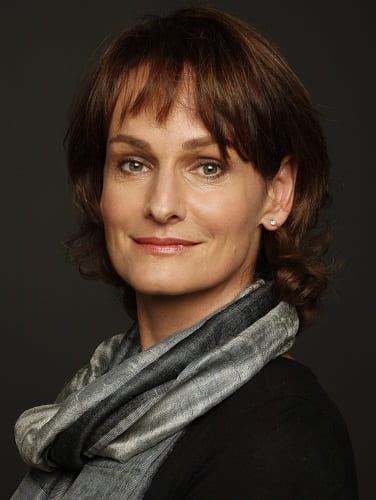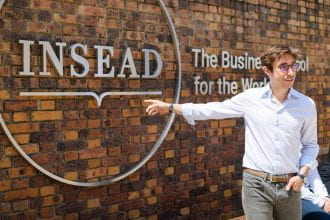Alumni and faculty collaborate to strengthen INSEAD’s thought leadership in private equity
 In 2008, when INSEAD Professor Claudia Zeisberger wanted to create a high-impact course that provided the knowledge and skills to manage a corporate turnaround, she didn’t just rely on her expertise in private equity and financial markets.
In 2008, when INSEAD Professor Claudia Zeisberger wanted to create a high-impact course that provided the knowledge and skills to manage a corporate turnaround, she didn’t just rely on her expertise in private equity and financial markets.
She and Entrepreneurship Professor Philip Anderson also reached out to experts in the school’s alumni community.
In fact, they interviewed more than 50 practitioners to build the new class, “Managing Corporate Turnarounds” (MCT). The MBA elective launched in May 2009 to help students diagnose the causes of a company’s decline, assess strategic responses, and develop a turnaround plan through financial and operational restructuring.
“To design a relevant course and understand the crucial steps to make a turnaround successful,” Zeisberger says, “we needed to interview experts who had rescued companies of all sizes, developed some best practises, and would be willing to share their experiences.”
Around the same time as MCT’s development, the Affiliate Professor of Decision Sciences and Entrepreneurship was initiating the INSEAD Global Private Equity Initiative (GPEI), a research centre. For both projects, Zeisberger knew that practitioner insights and engagement would prove crucial.
“As one of the world’s top business schools, relevance in our teaching is paramount,” says Zeisberger, who has worked for major global financial institutions in more than 10 countries, including nearly two decades in Asia.
Her robust professional network has yielded talented speakers and collaborators for the turnaround class and her other courses. Among those who have contributed to MCT’s success are Joost de Haas MBA’86J and Nicholas Ward MBA’68. Ward, a British citizen, is a chartered accountant with decades of diverse management leadership experience, including in the textile, healthcare, retail and venture capital arenas; de Haas, a former McKinsey consultant active in turnaround management since 2001, has founded several businesses in various industries. The Dutch native and economist is CEO of Roto Smeets Group, a leading European print and multimedia company.
“I cherish the opportunity to give something back to INSEAD,” says de Haas, who is an Adjunct Professor of Entrepreneurship and Family Enterprise at INSEAD. “The school has had a significant impact on my professional life. I greatly enjoy the discussions with students from such diverse backgrounds.”
Similarly, Ward was inspired to lend his insights to the course out of his “great affection” for INSEAD and its “hugely important” role in advancing his professional life. In fact, when he began participating in the INSEAD course, the case he presented was his own. It was “live”, one that he was actively managing. Like Zeisberger and de Haas, he has an enormous passion for turnarounds—in all their messy complexity.
“I love turnaround because it’s so ghastly!” Ward says. “Because of all the challenges, you really have to have an enthusiasm for it.”
Watching the cash flow
Given this practitioner participation, it’s no surprise that MCT offers students a rigorous and relevant learning experience. While no two turnarounds are identical, some of the underlying factors are similar.
“Common to most is a dumb lender or investor who has put money in without doing proper due diligence and a management team out of its depth,” says Ward. Stepping into this situation, the turnaround expert must quickly assess the situation and develop an action plan. Getting a handle on the financials is job one.
“As we say in class, ‘cash is not only king, it is the only thing’ when it comes to turnarounds,” notes Zeisberger. “It is important to understand that the dynamics change drastically as soon as a firm slips into distress.” Managing stakeholder relationships becomes crucial and, often, major staffing changes occur.
Ward says that the firm’s financial chiefs almost invariably must go, as it is imperative to have a wholly reliable finance team, one experienced in turnarounds and not tainted by the issues that gave rise to the firm’s troubles. But he says that he prefers to salvage as much of the company’s existing staff—especially the “second-line” managers who have considerable organisational knowledge. Doing so can offer some stability during the turnover.
“You’ve got angry creditors who are worried. Staff is worried. Everyone is worried,” says Ward, outlining the typical scenario. “Outsiders come in and things are always worse than they thought, so then the new leader gets worried too.”
Against this dramatic backdrop, turnaround experts try to rescue a failing or underperforming firm. For de Haas, this complexity is among the most exciting parts of the challenge. “All the rules of the game change,” he says. “A long-time ally can turn into an enemy. On the other hand, you may suddenly find that your interests align with your greatest adversary.”
Turnarounds often, though not always, occur in distressed situations, says de Haas. A firm can be profitable but still sliding in the market. Regardless, the most gratifying aspect of a successful turnaround, he says, is preserving value for all stakeholders.
“People spend their time, money and energy creating a company,” he says. “By turning it around, you have the chance to save as much as you can instead of letting it all fall apart.”
Keep turning to keep learning
De Haas believes that the frameworks presented in MCT are valuable for any practitioner. “Look at it this way,” he says. “If you know how to sail a boat through a storm, you are a better captain on a calm sea too.”
The turnaround elective is considered a work in progress, one that continuously explores new aspects of its subject, deepening the curriculum through student feedback and practitioner examples. For instance, the course is developing a simulation that will give students hands-on experience in managing turnarounds.
“Students will step into the shoes of the CEO or CFO, making turnaround decisions that impact the firm’s well-being,” says Zeisberger, who expects the simulation to launch early next year.
Students benefit from alumni perspectives, but so do faculty members. Zeisberger says that industry experts help her develop fresh ideas and pursue new questions and research. “In discussions with alumni we learn about their challenges and explore difficult issues,” she says. This “intellectual jousting” is valuable for the MCT course, which presents “a multifaceted topic where there is no ‘one-size-fits-all’ approach,” says Zeisberger.
Alumni add value to GPEI project
While faculty and alumni collaboration is transforming how MBA students gain the skills to manage turnarounds, a similar partnership is strengthening INSEAD’s overall private equity scholarship.
The Global Private Equity Initiative, launched in 2008 and directed by Michael Prahl, MBA’05D, draws upon INSEAD’s network of alumni practitioners who work in the private equity space—numbering some 3,000. GPEI leverages INSEAD’s worldwide presence to provide an independent platform for partners and other stakeholders to exchange ideas. The initiative also covers the global private equity industry with a balance between developed and emerging markets, providing news and analysis, including through its Private Equity Navigator, a quarterly publication launched in 2013.
GPEI is a truly global private equity initiative, one that has attracted major industry partners and that combines INSEAD’s excellence in teaching and research with a focus on practitioners.
“GPEI is now a well-structured centre, with clear processes and a solid foundation,” says Zeisberger. “It is a hub for research, speaking engagements, and project work for our students. It also is spurring on-campus recruiting by private equity firms and has become the ‘go-to’ source for PE, especially in emerging markets.”
All this activity promises to inspire ongoing breakthroughs in the classroom, too, as the faculty-practitioner partnership continues to yield big returns.
“Every time I come to campus it feels like coming home, and every course I teach leaves me invigorated,” says de Haas. “I try to convey my passion for my profession and inspire students. We can’t give them a standard approach or solution, but I try to get them to think critically.”
He knows that not every one of his students will become turnaround expert, but he says the knowledge they gain from the turnaround course can prove invaluable.
“It may, in fact, help them avoid a turnaround situation for their firm.”


